The Bicycle Blue Book is one of the top pricing and valuation guides for bike buyers. If you’re shopping for a bike and want to compare options, the Bicycle Blue Book offers comparisons between models, years, and styles. and the selling price for your bicycle.
But how does the Bicycle Blue Book stack up against other similar guides, and how can you use it to find the right bike at your ideal budget? In this post, we’ll present our guide to the Bicycle Blue Book.
Table of Contents
What Is the Bicycle Blue Book?
The Bicycle Blue Book is an online valuation tool that helps riders estimate the fair market value of their bikes based on make, model, year, and condition. Founded by cycling industry experts, it’s become one of the most popular resources for used bike pricing — similar to how Kelley Blue Book is used for cars.
The platform uses historical sales data, marketplace trends, and depreciation models to give you a trade-in value and a private-party value, helping you understand what your bike is worth, whether you’re selling, buying, or trading it in at a local shop.
While not official or manufacturer-backed, it’s widely recognized across the cycling community, and many bike shops rely on it to guide trade-in offers.
Comparing Bicycle Blue Book to Other Bike Comparison Tools
| Source / Tool | Strengths / Use Cases | Limitations / Things to Watch Out For |
|---|---|---|
| Bicycle Blue Book | Widely known, easy to use, covers many standard models | May not reflect regional demand, doesn’t always account for custom upgrades |
| Local Bike Shops (LBS) | Can inspect bike in person, consider upgrades or condition, and real-world appraisal | Appraisal may be conservative, shop incentives or biased, limited to the local market |
| Online Marketplaces (Pinkbike, eBay, Facebook Marketplace, etc.) | Shows actual asking & sold prices in your area, gives real market context | Prices may be aspirational (unsold), listings omit condition/damage, market swings |
| Other Valuation Tools (e.g. BikeIndex, Bicycle Values) | Useful for insurance valuations, theft recovery estimates, and alternate reference points | May use a different methodology, data sparse for uncommon bikes, not always updated |
While Bicycle Blue Book is the best-known resource, it’s not the only one. Depending on your goals, consider pairing it with:
Local Bike Shops: Great for real-world appraisals, especially if your bike has upgrades not listed online.
Online Marketplaces like Pinkbike Buy/Sell, eBay, or Facebook Marketplace: Useful to see actual asking and sold prices in your area.
Other Valuation Tools (e.g., BikeIndex, Bicycle Values): Helpful if you need insurance or theft recovery estimates.
By comparing across a few sources, you’ll get a more accurate feel for the current market value.
Finding Value for My Bikes in the Bicycle Blue Book
Trek 4300
I visited bicyclebluebook.com on a desktop. I was presented with the screen you see above. On the top right, I went to the Value Guide. I didn’t enter the search box. Instead, I tried to find my Trek 4300 bike in their database.
The website presented me with a page with all the models available, with some omissions.
So I picked the year closest to mine: 2002, as mine did not come with disc brakes, and so the 2002 model was similar to mine.
Under bike condition, I choose the default “Good” condition. When I clicked “confirm”, it highlighted the trade-in value, private party price range, and how much it was sold for at MSRP.
I bought my Trek 4300 new from a store for around $400 in 2004. I expected a significant price drop, given I bought the bike almost 20 years ago. My ballpark value for the Trek 4300 was somewhere between $50 and $70.
Imagine my surprise when I saw the Trek’s value for a private party range of $118-to-$122.

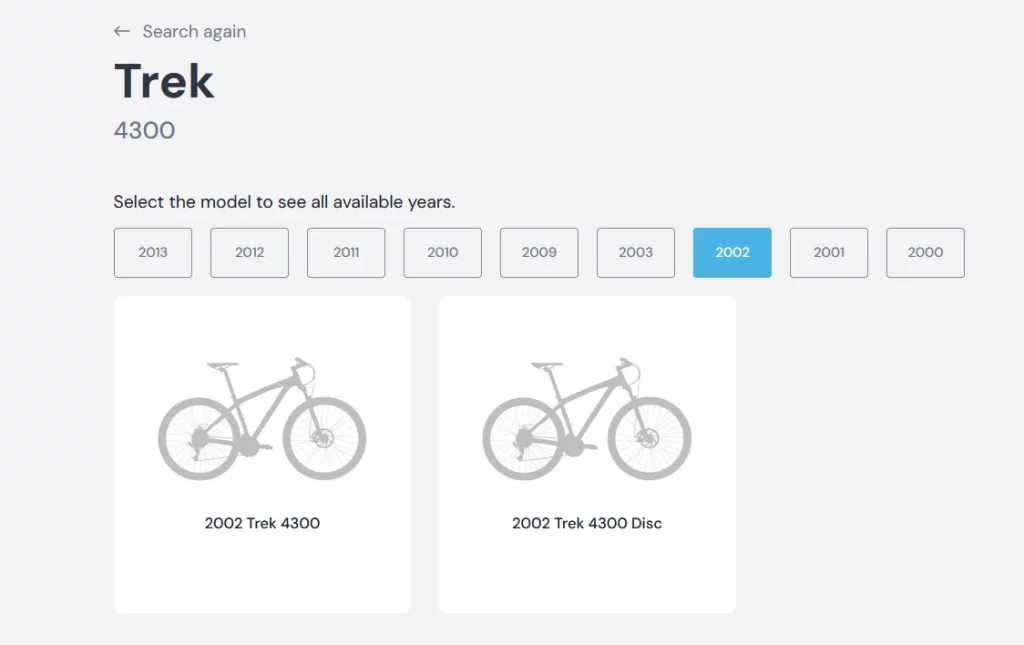
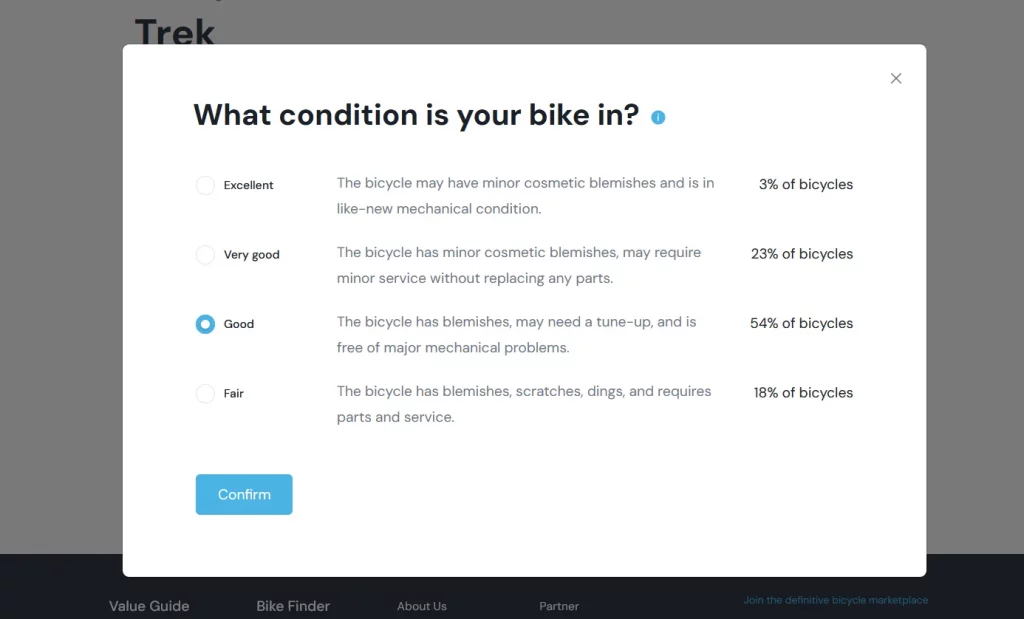
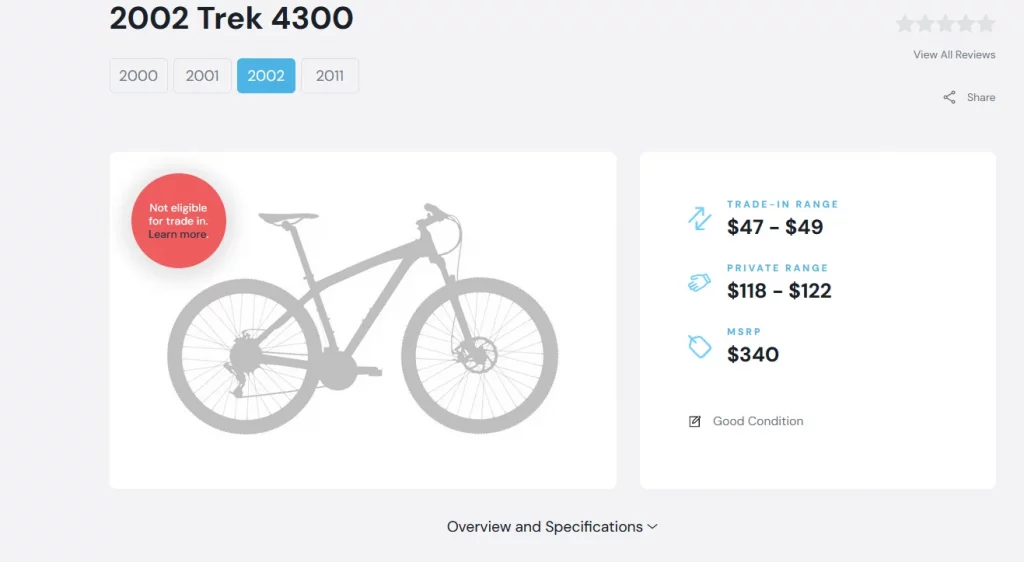
After assessing the Trek’s Blue Book value, I began checking if any Trek 4300s were for sale within the Blue Book.
I went back to the home screen and entered my bike model in the search box. My search gave me 1 result for an 18″ Trek 4300. It was the exact color as mine, which was a surprise. This Trek version was for sale for $140. The condition was listed as very good. This price was within the range indicated when I tried to value the bike.
If you own a 2004 Trek 4300, you can technically expect to receive about $140. Although it’s debatable whether another rider would want to pay that much for a 20-year-old bike. Would you be willing to pay $140 to get a Trek 4300?

Poseidon X
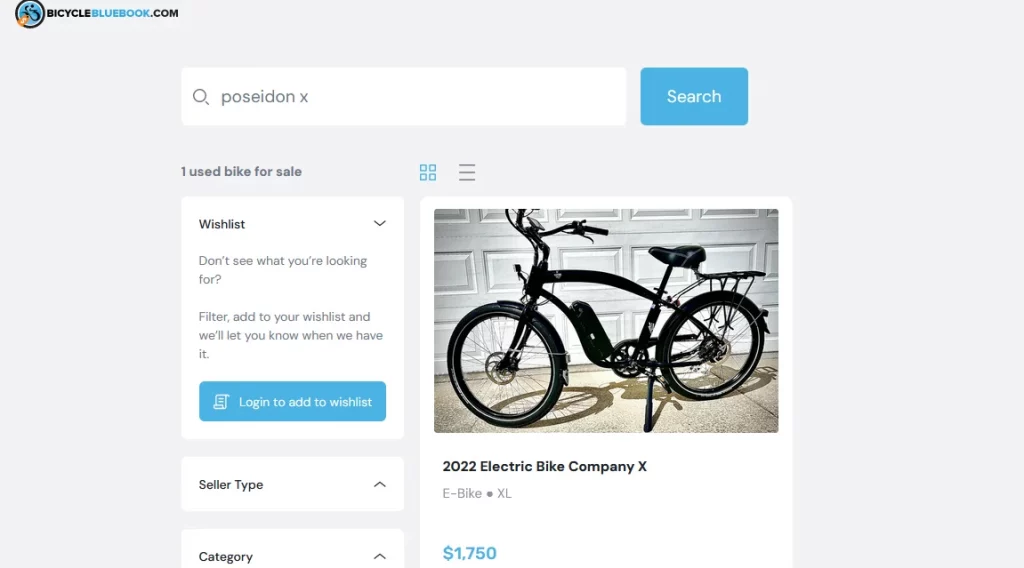
Cannondale Evo 6
Once I chose my model, I was presented with the bike condition again. I prefer the default Good. I was given the Private party sale price range between $569 and $587. The mid-tier price of $578 might be a good starting point. I bought the bike for $2200. The bike retained about 25% of its value.
Cannondales in Very Good condition have a price range of $625-$644, and models in Excellent condition range between $656 and $675.
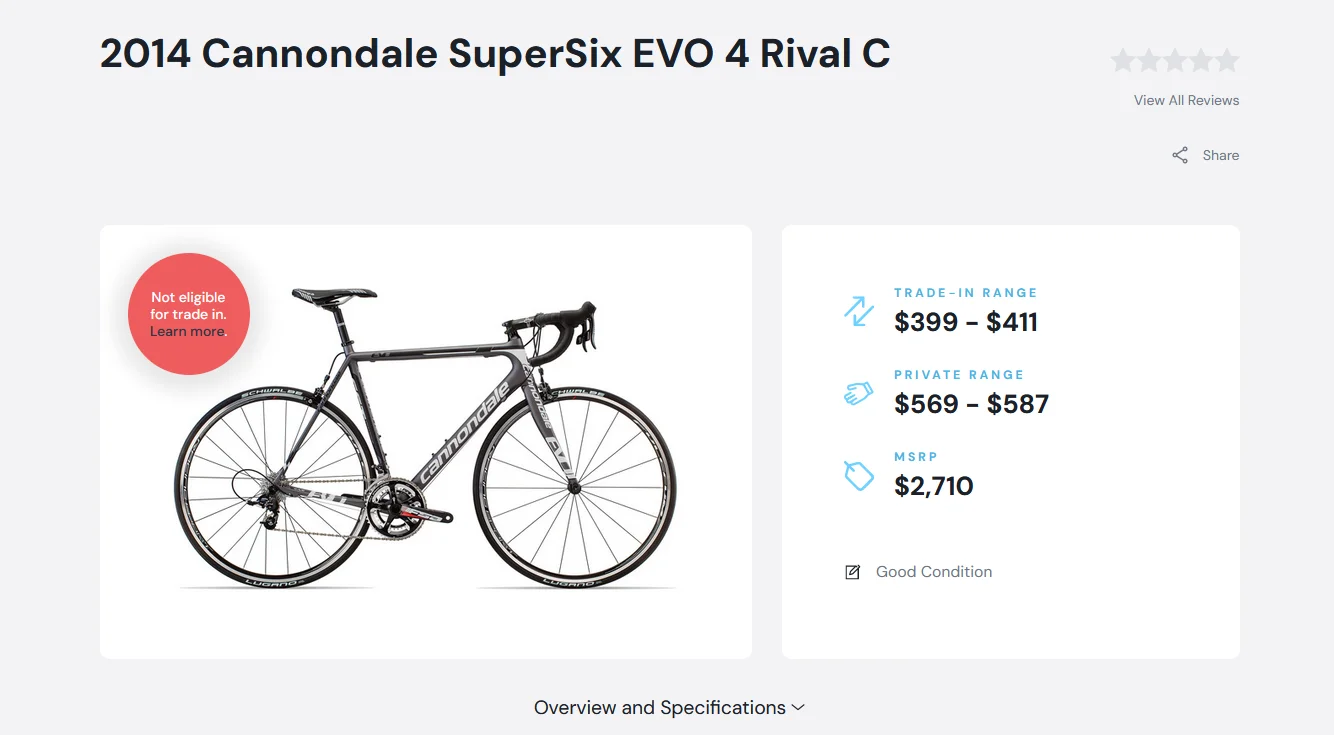

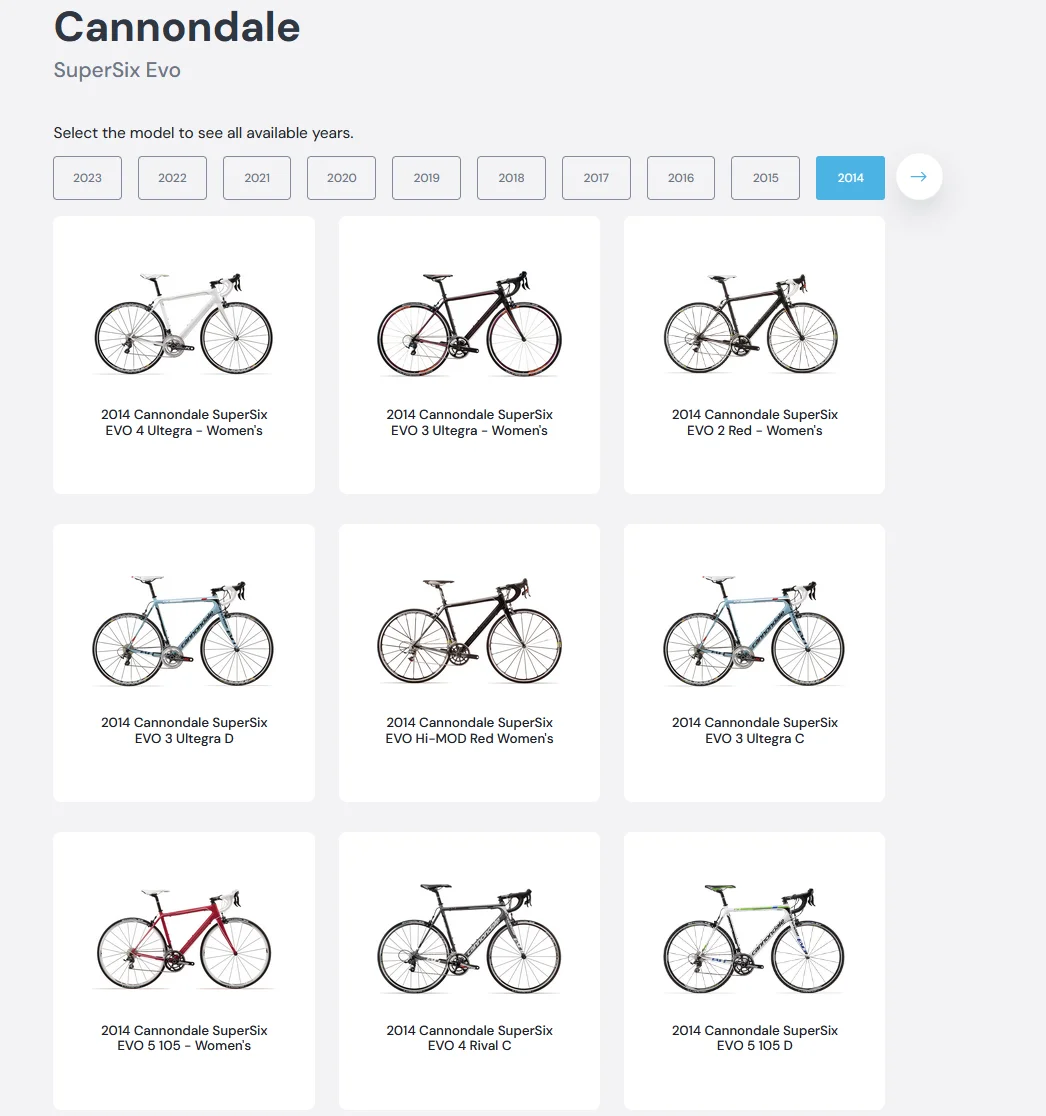
Finding Cannondale Sellers in the Bicycle Blue Book
A Rise in Bike Demand
During the pandemic in 2021, there was a high demand for bicycles. Local Bike Shops were having a hard time keeping up with orders for new bikes. Used bike demand grew considerably.
Online marketplaces were teeming with activity for used bikes. So when I tried to see how much I would get, I listed the Cannondale for around $1000 on Facebook Marketplace.
Few buyers approached me for such a high price for a then less than 10-year-old bike. Some offered as low as $300, citing the life of carbon frames, the mileage, etc. Even if your bike is as good as new, the real-world pricing would make you rethink the potential appraisal values suggested by the Bicycle Blue Book.
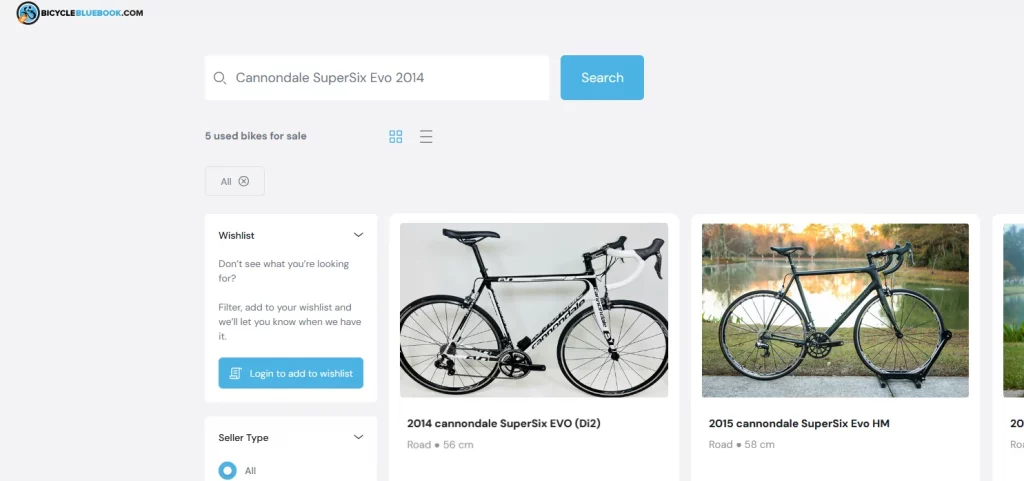
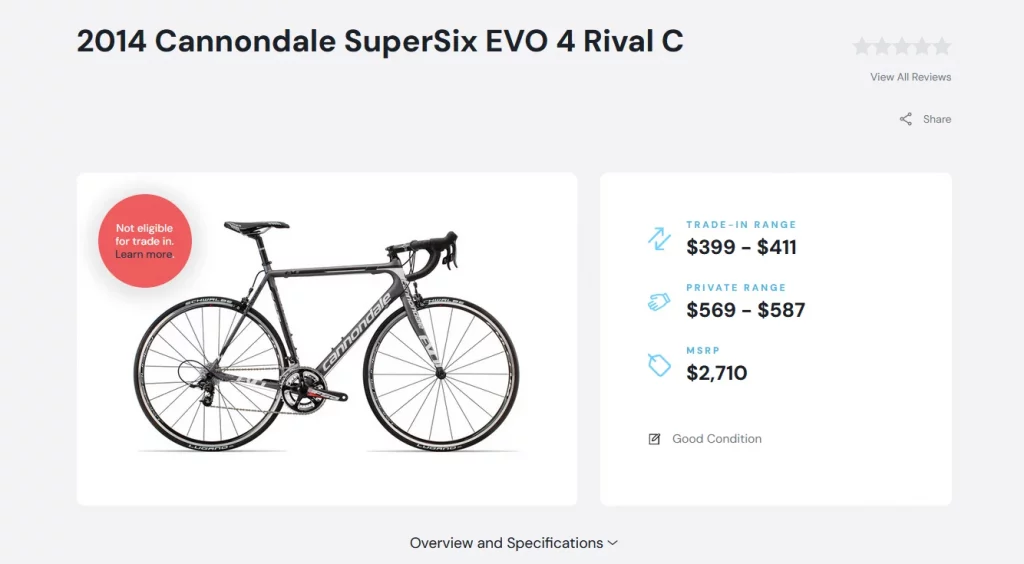
How to Save Money With the Bicycle Blue Book
There are many ways riders can save money using the Bicycle Blue Book (BBB).
1. First, decide on a budget for your bike purchase.
2. Then use the BBB database to find the value and the condition of the bike you would like to buy or sell.
3. Once you know the price range for the bike model you have in mind, you have a few options: you can either stay on BBB and look for bikes to buy, or go to another site or shop at your local bike shop to make your purchase.
Buying with the Bicycle Blue Book
For cyclists purchasing a bike on BBB, there are three purchase options – BBB Direct, Online Store, and Private Seller. For BBB Direct and Private Seller, you can send a message to the seller. Then you can begin negotiating bike price, shipping, warranty, guarantee, etc.
For the online store, it’s an e-commerce shop where you buy the bike at the listed price. You are not able to message the person (or retailer) for negotiation.
For offline buying options and websites offering local used and new bikes for sale, check Facebook Marketplace, Craigslist, OfferUp, or even your local bike shops or community centers.
The same methods apply to selling your bike, either on BBB after you create an account, on another site, or through a local vendor.
Ultimately, it comes down to how much you want to spend or receive for the bike. Set realistic expectations, determine your budget, and then explore the Bicycle Blue Book to fine-tune your research process.
What I Discovered in the Bicycle Blue Book
I had three different experiences when trying to assess my bikes’ value with Blue Book.
- The value for my Trek was higher than I expected.
- The Cannondale gave me a more realistic value.
- I could not find a value for the Poseidon X, perhaps due to the company’s relatively small size and market.
You can expect this type of experience when you use the Bicycle Blue Book for yourself. For the popular makes and models, you may be able to pinpoint price and potential sale value given the bike’s condition.
I found the Bicycle Blue Book a versatile resource for bike enthusiasts to buy and sell their bikes. The site is intuitive and provides clear details regarding the market for both used and new bikes. As the Blue Book gains popularity, I am sure even small bike manufacturers like Poseidon will get in the database, and give more options for hardcore riders like us.
How Does the Bicycle Blue Book Work? (FAQ)
How does Bicycle Blue Book determine values?
It uses historical sales data from major retailers, trade-in programs, and online marketplaces. These are adjusted for model year, depreciation, and condition, creating a fair value range.
Is Bicycle Blue Book free to use?
Yes! You can search and view values at no cost. Some features, like detailed specs or resale services, may require you to sign up.
What’s the difference between Trade-In Value and Private Party Value?
Trade-In Value is what a participating bike shop might offer if you trade your bike for a new one. Private Party Value reflects what you could sell it for yourself in a direct sale.
What if my bike model isn’t listed?
Try searching under similar model names, older years, or alternate spellings. If you still can’t find it, look at current listings on eBay or Facebook Marketplace to estimate its value manually.
How accurate is the Bicycle Blue Book?
It provides a baseline, but actual prices vary based on region, upgrades, and market demand. Always cross-check with local listings.




[…] had written a Guide to the Bicycle Blue Book. On there, the Trek was worth about $140. But this a 20 year old bike. But it might be hard to find […]